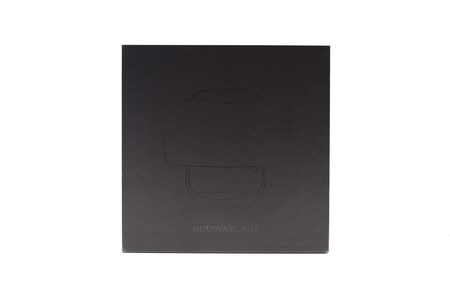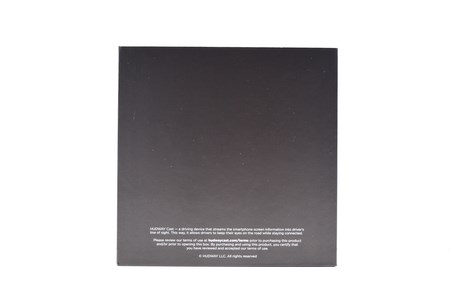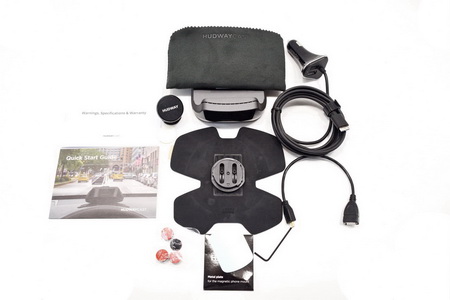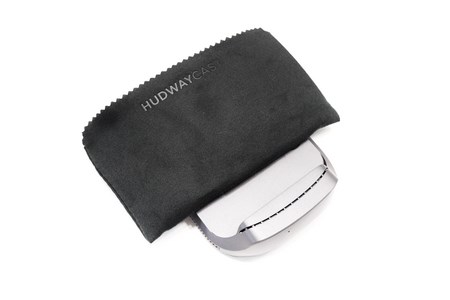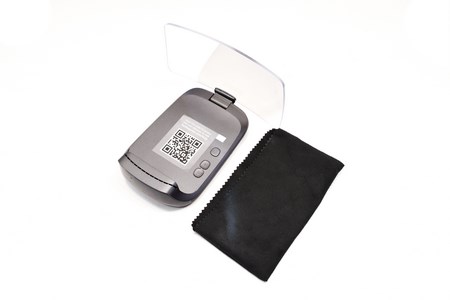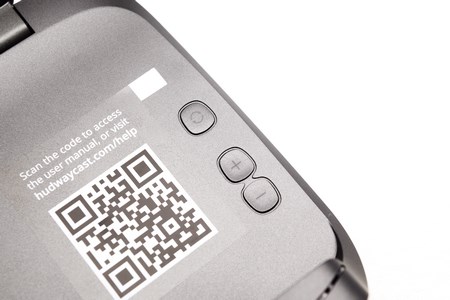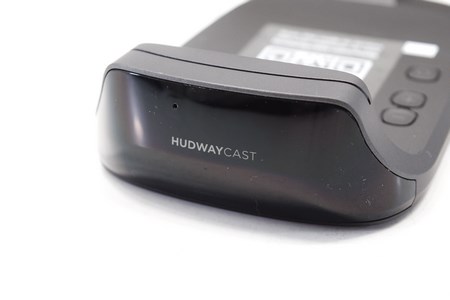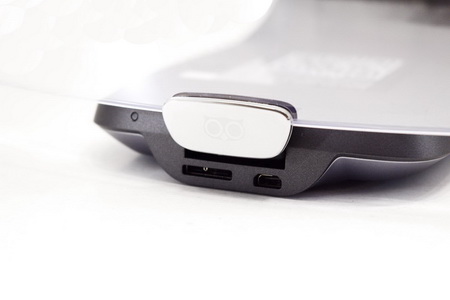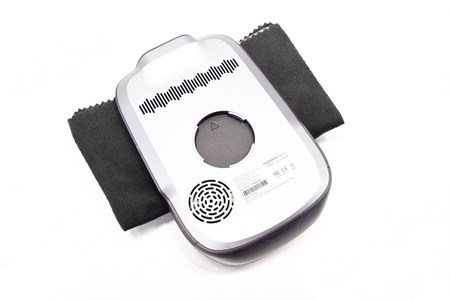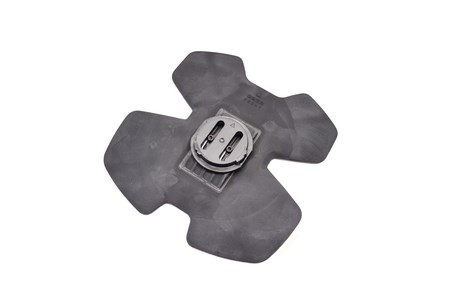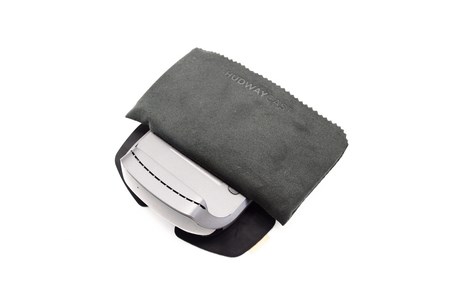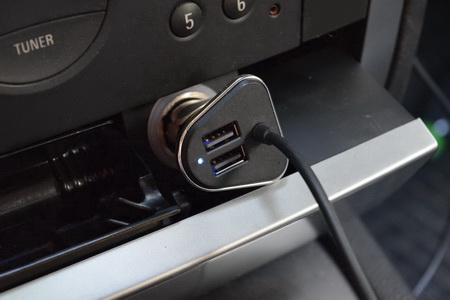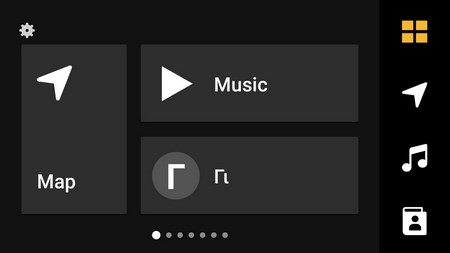INTRODUCTION
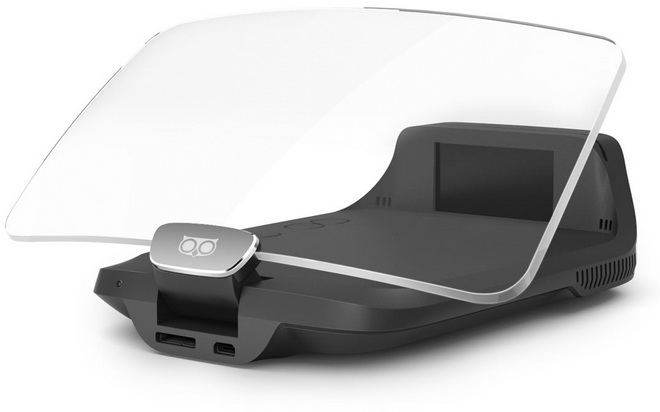
If you happen to drive a car and you find yourself using Google Maps (or any navigation app for that matter) quite often then you know just how hard it is to keep your eyes both on the road and the map on your smartphone. HUD (heads up display) systems have solved the largest part of that issue but on one hand even now not all cars are equipped with one while on the other the ones that are usually display only basic information like speed and RPM (more advanced models also display traffic signs, speed limits and even lanes). Many aftermarket manufacturers have released HUD devices over the years but it wasn't until HUDWAY announced their innovative Glass model back in 2013 that people started to notice. The Glass however was just the beginning so last year and roughly 3 years since its official release HUDWAY announced the far more advanced Cast model which has been with us for almost a month now.
HUDWAY is not another navigator wrapped creatively. With our app and accessory, we want to enhance the drivers’ safety in poor visibility (nighttime, heavy fog, rain, blizzard, etc.), when the headlights won’t let you see the road ahead beyond 50-100 meters, — and that’s dangerous. We increase the drivers’ awareness — and we do it right on the windshield, in their main viewpoint, so that they are not distracted from the road to a bright navigator display showing loads of tiny inscriptions, signs, lines and arrows. We believe that simple solutions can save lives. And we ought to try them, since about 120.000 people a year die only because of poor visibility. It’s almost 350 people every day.
The Glass HUD by HUDWAY was basically a smartphone holder attached to a flip-up clear acrylic screen which was then used to reflect the image projected by your smartphone (no power source needed). This of course ment that not only did you need to have your smartphone placed on the HUDWAY Glass base at all times (thus you couldn't really use it for anything else but navigation) but on a sunny day that also ment seriously increased temperatures. These are things we (and other media) pointed out to HUDWAY from day one and so the Cast is actually a complete electronic device and although it basically does the same exact thing as the Glass this time over it projects the screen of your smartphone (compatible with both iOS and Android) onto its clear acrylic screen wirelessly (Miracast) with the help of a tiny TFT screen. This combination projects a virtual 20” image and focuses it 8 feet in front of you so it's easier for you to focus on. Of course that means you still need your smartphone to remain with its screen turned on but since the HUDWAY Cast also works as a hands-free speakerphone (for making/answering calls) and even displays incoming text messages you're not just limited in navigation. So time to check out the brand new HUDWAY Cast and see if this is the car HUD you've all been waiting for.
SPECIFICATIONS AND FEATURES
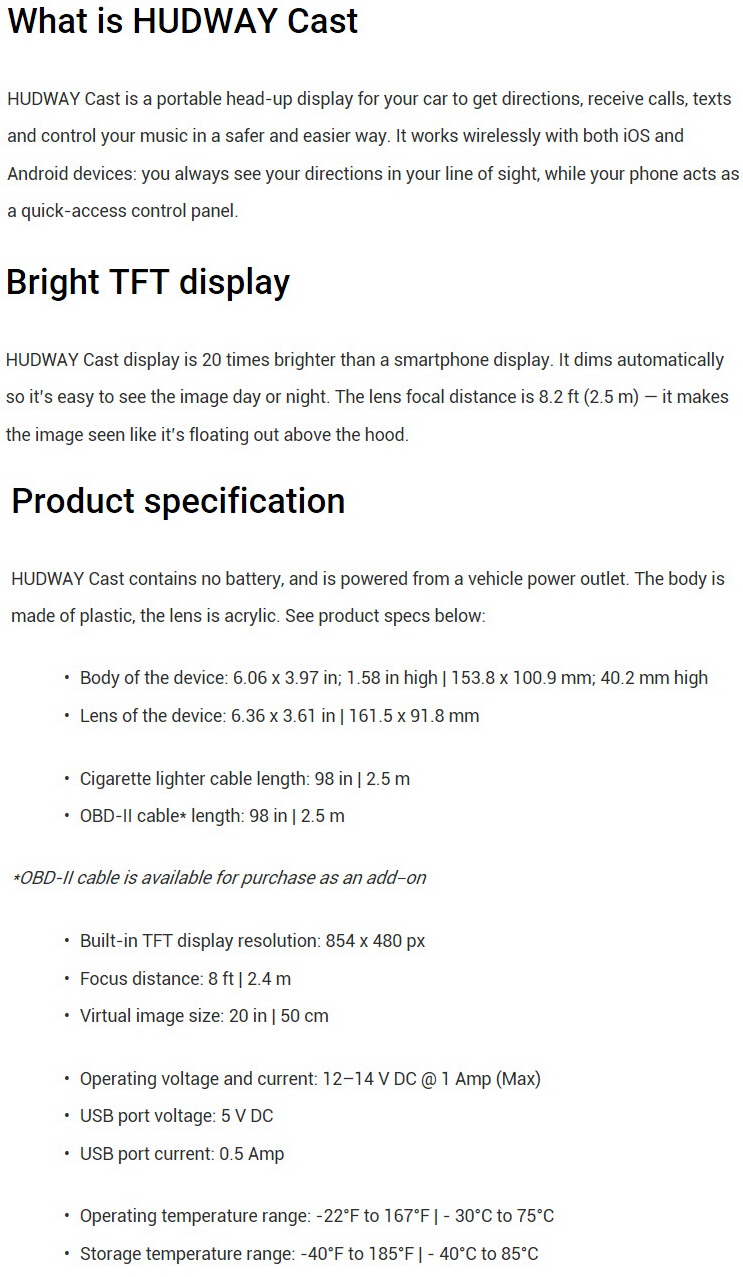
PACKAGING AND CONTENTS
The HUDWAY Cast arrived inside a black box that has a drawing of the device at the front.
A short disclaimer is printed at the rear of the box.
HUDWAY has placed the Cast and its bundle inside two formed pieces of black foam.
Along with the HUDWAY Cast you are also getting a 12V car lighter cable, screen cloth cover, rubber adjustable base, small Allen key (to adjust the rubber base), magnetic phone holder, metal plate (for your smartphone), USB to micro USB cable, 4 small cable holders (for routing the power cable), quick start guide and a warning and warranty paper.
THE HUDWAY CAST
The HUDWAY Cast is quite bulky and so it measures 153.8mm in length, 100.9mm in width and 40.2mm in height (108mm with the screen upwards).
A nice cloth cover was something we all wanted with the Glass so it's a good thing HUDWAY did that with the Cast.
There are three buttons on the main body of the Cast the one with which you can rotate between iOS and Android compatibility (pairing) and the increase/decrease volume buttons.
Both the company and model name are placed on the polished rear of the device.
At the front we see the company logo, micro USB port (for use with the OBD-II cable) and the USB power port (identical to early USB 3.0 host ports).
Turning the device over we see the speaker and the base mount.
One other thing we didn't like with the Glass was its not so flexible and rather small base so the Cast comes with a much larger rubber one (you can use the bundled Alen key to adjust its angle).
The entire rubber base features 3M adhesive at the bottom.

 If you don't already have a place to mount your smartphone HUDWAY bundles a small magnetic phone holder as seen above.
If you don't already have a place to mount your smartphone HUDWAY bundles a small magnetic phone holder as seen above.
MOUNTING THE HUDWAY CAST
One more thing HUDWAY did right with the Cast was to make it very easy to remove the main unit from the rubber base something which was not possible with the Glass.

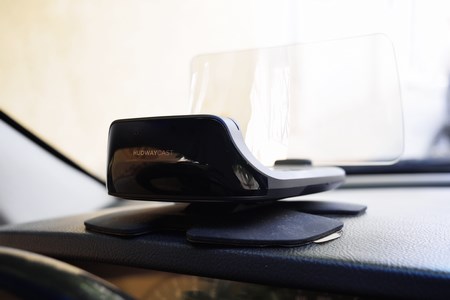
For our tests we used two sedans and as you can see from the above pictures the HUDWAY Cast fits nicely on the dashboard.


Still just like the Glass the Cast is not compatible with roadsters since the screen can't turn all the way upwards due to the very low angle of the windscreen (in the above pictures i placed the Cast as far back on the dashboard as i could with no luck). This may of course not be the case for every roadster or sports car in general out there but still we do hope HUDWAY will eventually release a model designed for such cars.
This may not be very important but it was nice to see that the lighter power adapter has two USB charging ports on it.
HUDWAY CAST APP
Although via mirroring you can mirror pretty much everything on your phone to the Cast the right way to use it is with the available app by HUDWAY.
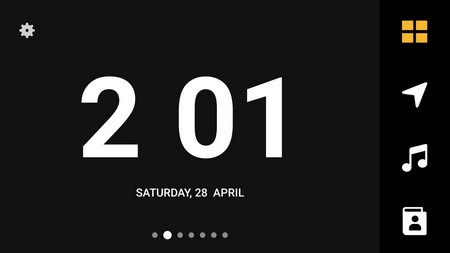

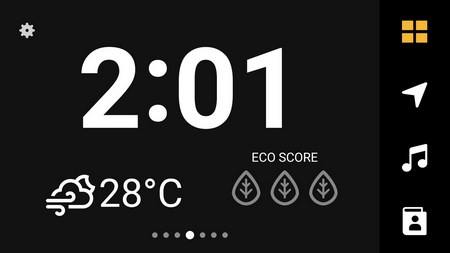


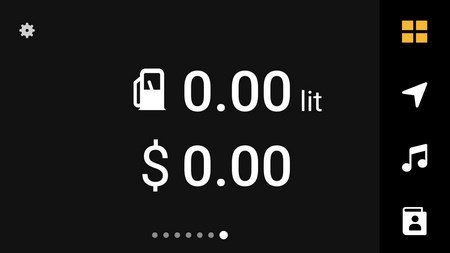
The app contains various info such as the time, location, temperature, eco score (depends on how fast/slow you drive), digital and analog speedometers and gas savings.
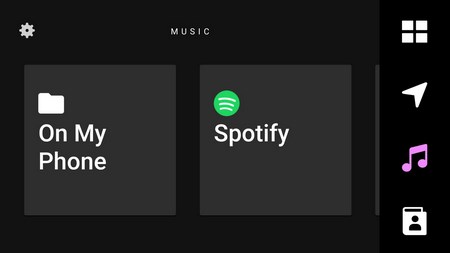

You can also play music from your phone to the Cast (either stored in your phone or from Spotify or Apple Music).


As you can see the navigation tab is somewhat basic but it's accurate and smooth (sometimes it does take a while for the app to send info to the Cast but that happens only at start).
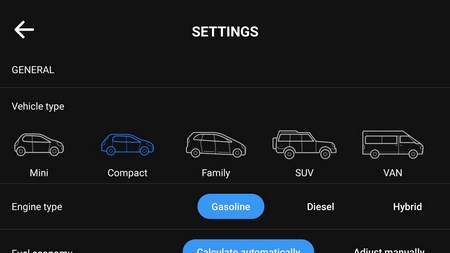
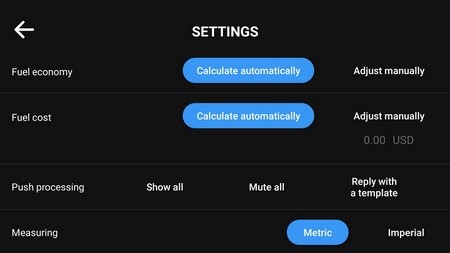
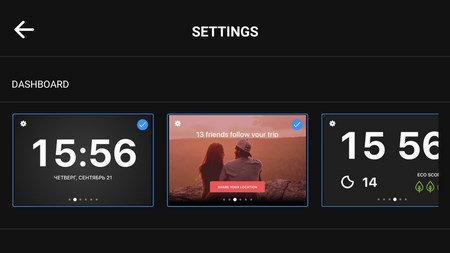
From the settings tab you can choose the type of vehicle you're using (i guess it's no coincidence that roadsters are not included), the type of engine, measuring system and which screens to be displayed.
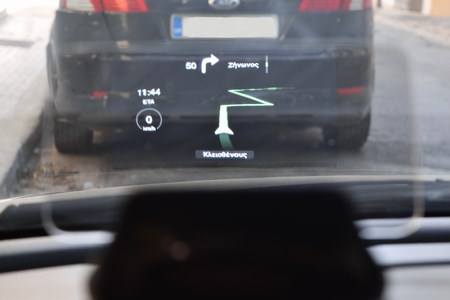
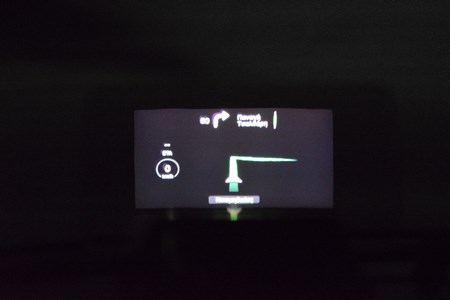
Here you can see the screen intensity of the Cast both during the day and night (at pitch dark the camera lens had a hard time focusing on the screen).
CONCLUSION
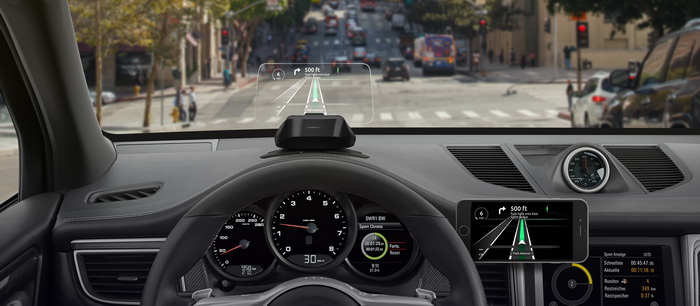
When we reviewed the HUDWAY Glass back in 2016 i can't say that we were that much impressed with it. Sure back then it was something new and its price was pretty much on the spot (still a tad more than what we had hoped) but due to the issues we even pointed out in this review it was far from perfect. The HUDWAY Cast may not be perfect either but not only does it resolve several of the issues we found with the Glass (for example it can be dismounted and has a far larger and flexible base which can be used virtually with any dashboard) it’s a much more complete solution for people who want more from a car HUD. Sure it's not as advanced as the upcoming HUDWAY Drive model (lacks several useful features but the Drive is still a long way from reaching retail) but it does exactly what people will want it for and that’s to project the navigation screen of your phone onto its acrylic screen. That’s not all however since it can also be used as a speakerphone and to read and even help reply to text messages. The HUDWAY Cast can also be powered by an optional OBD-II cable which enables it to display speed and RPM without being connected with your smartphone (unfortunately HUDWAY did not provide us with that cable so we can’t really comment on its usage). Still like we said it’s not perfect so leaving out its rather bulky size (which means you can’t use it in some cars like roadsters) you will also have to route its power cable and that may not look very nice (professional installation is recommended for a more “permanent” result). The Navigation app may be quite good but due to some delays in sending info to the Cast and lack of features compared to Google Maps. Finally we did encounter some disconnections when using the Cast with Android smartphones but that might easily be some incompatibility with the models we have here.
Unlike the HUDWAY Glass which was always ment to be an entry-level HUD solution the Cast is a complete HUD solution for your car and that means it doesn’t come cheap. Still with a current price tag set at USD199 (directly from HUDWAY’s product page) the Cast is actually not a very expensive piece of equipment (early Kickstarter backers however got it at a bargain price of USD159). That being said if you don’t really have much use for a HUD device just yet we do recommend waiting for the more advanced (and probably more expensive) Drive model which offers the same features as the Cast and much more. Overall the HUDWAY Cast is what the Glass should have been and although it’s not perfect and doesn’t come cheap it’s certainly worth our Golden Award.

PROS
- Very Good Build Quality
- Screen Brightness Levels
- WiFi Connectivity
- OBD II Connection (Optional)
- Can Also Be Used As A Speakerphone
- Large Rubber Base (Removable Main Unit)
- Easy Installation
- Magnetic Smartphone Holder
- Lighter Adapter With Two USB Charging Ports
CONS
- Price (For Some)
- Bulky Size (Car Compatibility)
- Navigation App (Some Glitches)
- Android Disconnections

 O-Sense
O-Sense





